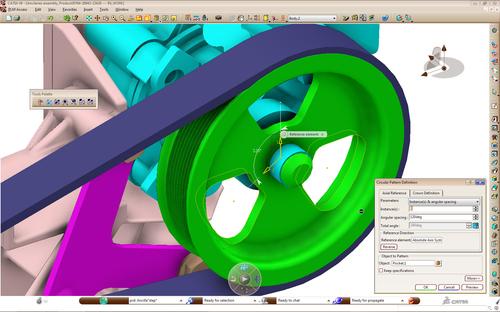Dassault Strengthens Interoperability Bridge Between V5 & V6
July 26, 2012

Interoperability issues between major releases has been an ongoing struggle between CAD and PLM vendors and their user base, and it appears Dassault Systemes has gotten that message loud and clear.
Dassault took it on the chin back in the late 1990s when it upgraded its CAD and PLM platform from V4 to V5, leaving many of its customers in the dust who were unable or unwilling to orchestrate the painful upgrade process to migrate to what was essentially an entirely different architecture. Because the two releases didn't work well together, Dassault ended up with a host of customers that opted to stay on the older V4 platform, essentially boycotting the newer version, and in some cases, even lost customers to competitors who were all too happy to exploit the lack of seamless compatibility between the two sibling platforms.

With the release of its V6 platform in 2008, Dassault was extremely careful to avoid going down the same path. From the get go, the firm took great steps to ensure that V5 would work well with the wholly redesigned V6 platform, including using the same geometry kernel, delivering a high level of consistency between workbenches, and incorporating a variety of other downward compatible capabilities. Dassault also promised to make continuing improvements to the V5 platform in recognition that customers would maintain a mixed environment for some time.
Well, Dassault is apparently not backing down on that promise. The latest release of the Version 5 PLM platform, which includes CATIA, ENOVIA, SIMULIA, and DELMIA, ushers in what company officials are calling a "major new evolution" in V6-to-V5 compatibility and collaboration. Dassault officials say CATIA V5 users will be able to edit key features of V6 models from within the older version -- downward compatibility that Dassault claims no other CAD or PLM vendor offers. The acknowledgement is that customers continue to have a requirement to support a supply chain environment that employs the newer V6 platform alongside existing V5 deployments, and likely will continue with that approach going forward.
"When we created V6, we knew customers would work in mixed V5/V6 environments," Dominique Florack, Dassault's senior executive president of products, research, and development, said in a press release. "What you're seeing is an engineered development of V5 and V6 solutions to ensure a compatibility that can't be found elsewhere."
About the Author(s)
You May Also Like



